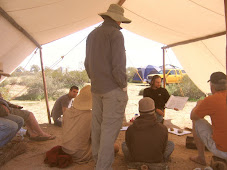What's up gutsers? I am coming to the end of 10 days of fecal transplant therapy carried out at home with my doctor's blessing and prescriptions.
I am posting here because I want to answer any questions people have about the procedure, especially if they are considering doing it themselves. So far it has improved my symptoms quite a bit, but has not been a total cure. I think it is going to turn out to have been a very valuable tool in the treatment, and eventual cure of my condition.
Below is a short version of the whole story of my illness. Check it out before asking questions... the answer may be in there.
My name is Ben. I'm 25 and I've been dealing with Post-Infectious IBS-C since January 2010. It started on a trip to India with some diarrhea and then I became constipated for the next two months of the trip. I tried the usual fiber + probiotics and I think they just made things worse. Since nothing was moving, I think they just gathered in my small intestine and gave me a case of SIBO because I ended up with terrible bloating on top of the C.
I had stool and blood tests done, as well as a colonoscopy, while traveling and they all found nothing. The Indian doc diagnosed the P-I IBS-C and gave me Lactulose, a daily laxative. I took that for a while and it helped the constipation, but made the bloating much worse. I eventually got another case of diarrhea, took some antibiotics for the diarrhea, and all the symptoms went away. About a week after the antibiotics, some symptoms returned in a very mild form, but didn't bother me much.
Then in January of this year (strangely enough around the same date that the first flare began in India), after 8 or so months of relative health, the constipation came back. Again I tried more fiber in my diet and probiotics and again this produced the backed-up, SIBO-esque bloating. I had stool and blood tests and an ultrasound that found nothing. I then tried 3 rounds of various antibiotics, because they seemed to help back when I was traveling. None worked this time, so I started working with alternative treatments: Oregano oil, raw garlic, cloves, Wormwood, Black Walnut hulls, Aloe Vera, acupuncture, Chinese herbs, etc. I've also been on the Specific Carbohydrate diet since early April. Some of the alternative treatments helped, and the SC Diet keeps the bloating from being too crazy, but nothing was really moving me in the direction of a cure. I also saw a holistic doctor who had me do a stool test with Diagnos-techs. It found a very light amount of Candida, moderate pathogenic Strep, occult blood, and low SIgA.
I got a recommendation for a tropical medicine doctor in New York (Dr. Kevin Cahill). I saw him and he inspected a scraping of my colonic mucous that revealed an infection with Entamoeba Histolytica. I was relieved to finally have a more clear diagnosis. He gave me Paromomycin, an anti-amoeba drug, and Doxycycline, an antibiotic. I took them, was retested by him, and came up negative for the amoebas. He told me it may take a couple months to heal and feel well again, but after abouta month and a half I only felt worse.
At that point I began to assume that the amoebas and all the antibiotics I had taken had caused some other damage to my whole flora that needed to be addressed. My holistic doctor had mentioned fecal transplant as a possibility and so I began to look for donors. Without intending to actually ask her to donate, I mentioned the procedure to a good friend's girlfriend and her eyes immediately lit up. "Do you want me to shit for you, Ben?!," she excitedly asked.
She told me she was very comfortable gut-wise and went 2-3 times a day consistently, which sounded great to me considering I was dealing with constipation. I started the low-fiber diet part of Borody's protocol right away and got her a stool test kit. Her test came back clear, and after 3 weeks of the low-fiber, I started taking Vancomycin, as recommended by Borody, as well as Nitazoxanide, an anti-protozoal just in case any of the amoebas were left.
The antibiotics made me feel horrendous. They added to the general feeling of unwellness that I had been experiencing for months, made me more constipated, and worsened the depression that this whole experience had created.
On the first day of infusions, I noticed an almost immediate loss of that depression and malaise. It could have been simply the hope involved in trying a new treatment, but it felt like there was a more physical, medical connection. It made me even more sure of the brain-gut connection and the ability of our flora to effect our emotions. I remained constipated for a couple days, but on the morning of the third day, I woke up to an immediate, easy, giant, solid BM. Those easy morning BMs have continued, except for one more bad day on day 5. Tomorrow will be the last infusion and then time will tell how well the new bacteria will colonize my gut.
The bloating after meals remains so I think it is a related but separate issue. Like I said before, it didn't start until a week or so into the constipation flares, after I had eaten lots of fibrous foods and taken probiotics in trying to move things along. If it does not fade with time, I'm definitely going to get tested for SIBO, and then treat that somehow, possibly following up with more transplants to keep things moving well.




